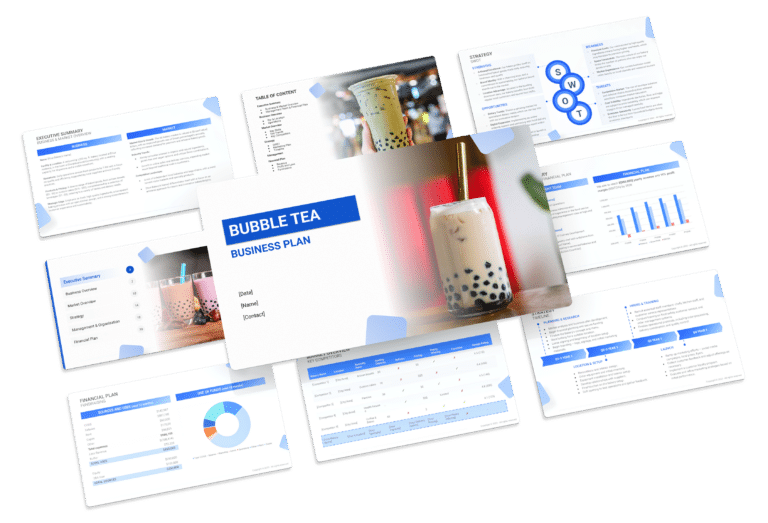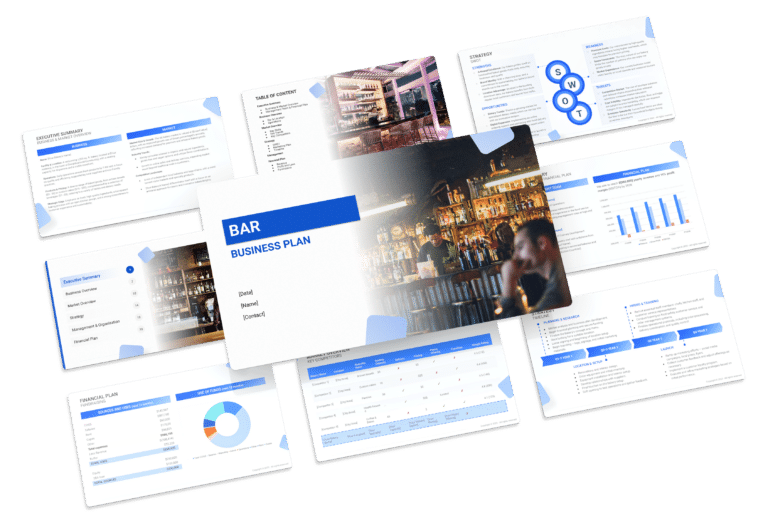How to Prepare a SWOT for a Coffee Shop

Integral to a coffee shop’s business plan, a SWOT analysis assesses internal strengths and weaknesses, as well as external opportunities and threats. Strengths, like quality brews and cozy ambiance, contrast with weaknesses such as reliance on seasonal trends or limited food options.
This strategic evaluation unveils the shop’s market stance, spotlighting potential growth areas. For instance, opportunities may arise from a growing demand for specialty coffee, while threats could originate from intense competition or fluctuating consumer preferences.
This article will explore diverse examples of strengths and weaknesses, providing coffee shop owners valuable insights for strategic business planning.

Strengths
Every successful coffee shop starts with a strong foundation. Identifying your strengths is like finding the perfect espresso blend – it sets the tone for everything else. Let’s delve into some common strengths of coffee shops before providing examples for each:
- Prime Location: A well-chosen location can bring in a steady flow of customers, whether it’s a bustling city center or a cozy neighborhood.
- Example: Your coffee shop is strategically situated near a busy commuter train station.
- Quality Coffee: Serving exceptional coffee and specialty beverages can create a loyal customer base seeking premium brews.
- Example: Your coffee beans are sourced from a local artisanal roastery known for its quality.
- Cozy Atmosphere: Providing a comfortable and inviting atmosphere encourages customers to linger and return for more.
- Example: Your coffee shop has comfy seating, warm lighting, and soft background music.
- Skilled Baristas: Having skilled baristas who can create a range of coffee creations adds to the overall experience.
- Example: Your staff includes a latte art champion who creates visually stunning coffee designs.
Weaknesses
Acknowledging your coffee shop’s weaknesses is the first step towards improvement. It’s an opportunity to fine-tune your brew for success. Let’s explore some common weaknesses of coffee shops, along with examples:
- High Operating Costs: Running a coffee shop can be costly due to the need for premium ingredients, equipment, and skilled staff.
- Example: The cost of maintaining and repairing your espresso machines is eating into your profit margin.
- Seasonal Fluctuations: Coffee consumption can vary with the seasons, leading to fluctuations in revenue.
- Example: Your summer sales are strong, but you struggle during the slow winter months.
- Limited Menu: Offering a limited menu can discourage some customers looking for a variety of beverages and snacks.
- Example: You focus primarily on coffee and lack a diverse food menu.
- Competition: The coffee shop market can be highly competitive, making it challenging to stand out.
- Example: A new coffee chain opened nearby, drawing some of your regular customers away.
Opportunities
Identifying opportunities is like discovering a new coffee bean with unique flavor potential. Here are some common opportunities for coffee shops, along with examples:
- Online Presence: Expanding your coffee shop’s online presence through a website or social media can attract a wider customer base.
- Example: Launching a user-friendly mobile app for online orders and loyalty rewards.
- Specialty Beverages: Introducing unique and seasonal specialty beverages can attract adventurous customers.
- Example: Offering a limited-time “Pumpkin Spice Cold Brew” during the fall season.
- Catering and Events: Providing catering services for events or collaborating with local businesses can boost revenue.
- Example: Partnering with nearby offices to supply coffee for their morning meetings.
- Sustainability: Embracing eco-friendly practices and promoting sustainability can appeal to environmentally conscious consumers.
- Example: Implementing a recycling program for coffee cups and using biodegradable materials.
Threats
Understanding potential threats is vital for protecting your coffee shop from unforeseen challenges. Let’s explore some common threats to coffee shops, along with examples:
- Economic Downturn: Economic recessions can lead to decreased consumer spending on non-essential items like coffee.
- Example: During the last recession, your coffee shop saw a significant drop in daily sales.
- Health Regulations: Stringent health and safety regulations can result in increased compliance costs and potential fines.
- Example: A surprise health inspection led to temporary closure and reputation damage.
- Changing Consumer Trends: Shifts in consumer preferences, such as a trend towards healthier beverages, can impact sales.
- Example: The rise of health-conscious consumers led to decreased sales of sugary coffee drinks.
- Rising Costs: Fluctuations in coffee bean prices and supply chain disruptions can affect profitability.
- Example: An unexpected increase in coffee bean prices reduced your profit margin.





